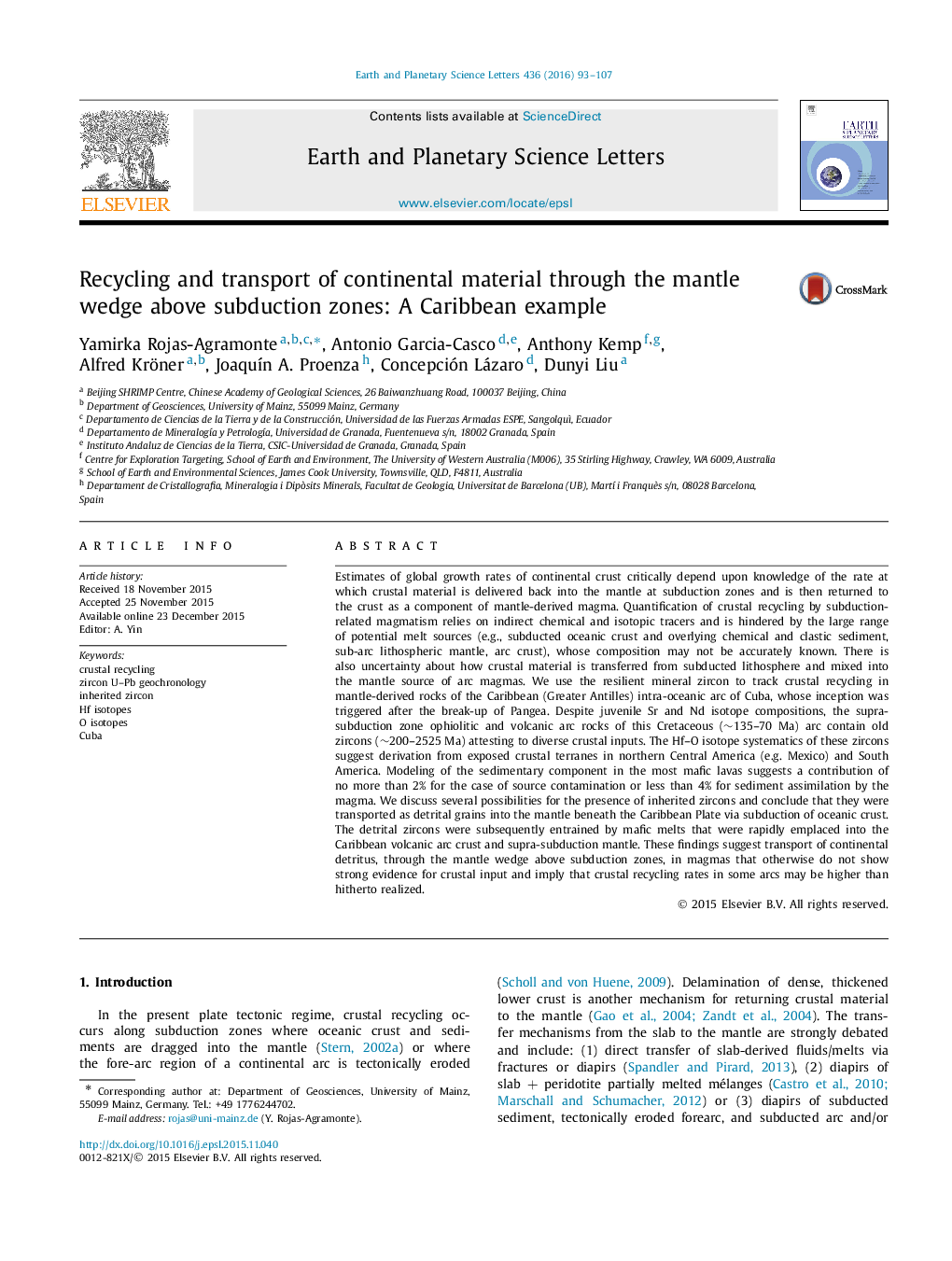| کد مقاله | کد نشریه | سال انتشار | مقاله انگلیسی | نسخه تمام متن |
|---|---|---|---|---|
| 4676955 | 1634720 | 2016 | 15 صفحه PDF | دانلود رایگان |
• We report on the presence of inherited zircons in Cuban ophiolitic and volcanic rocks.
• The zircons most likely derived from northern South America and Mexican terranes.
• The detrital grains were likely transported into the mantle via subduction of oceanic crust.
• Zircon survival suggests that crustal recycling rates in some arcs may be higher than hitherto realized.
Estimates of global growth rates of continental crust critically depend upon knowledge of the rate at which crustal material is delivered back into the mantle at subduction zones and is then returned to the crust as a component of mantle-derived magma. Quantification of crustal recycling by subduction-related magmatism relies on indirect chemical and isotopic tracers and is hindered by the large range of potential melt sources (e.g., subducted oceanic crust and overlying chemical and clastic sediment, sub-arc lithospheric mantle, arc crust), whose composition may not be accurately known. There is also uncertainty about how crustal material is transferred from subducted lithosphere and mixed into the mantle source of arc magmas. We use the resilient mineral zircon to track crustal recycling in mantle-derived rocks of the Caribbean (Greater Antilles) intra-oceanic arc of Cuba, whose inception was triggered after the break-up of Pangea. Despite juvenile Sr and Nd isotope compositions, the supra-subduction zone ophiolitic and volcanic arc rocks of this Cretaceous (∼135–70 Ma) arc contain old zircons (∼200–2525 Ma) attesting to diverse crustal inputs. The Hf–O isotope systematics of these zircons suggest derivation from exposed crustal terranes in northern Central America (e.g. Mexico) and South America. Modeling of the sedimentary component in the most mafic lavas suggests a contribution of no more than 2% for the case of source contamination or less than 4% for sediment assimilation by the magma. We discuss several possibilities for the presence of inherited zircons and conclude that they were transported as detrital grains into the mantle beneath the Caribbean Plate via subduction of oceanic crust. The detrital zircons were subsequently entrained by mafic melts that were rapidly emplaced into the Caribbean volcanic arc crust and supra-subduction mantle. These findings suggest transport of continental detritus, through the mantle wedge above subduction zones, in magmas that otherwise do not show strong evidence for crustal input and imply that crustal recycling rates in some arcs may be higher than hitherto realized.
Figure optionsDownload high-quality image (124 K)Download as PowerPoint slide
Journal: Earth and Planetary Science Letters - Volume 436, 15 February 2016, Pages 93–107
